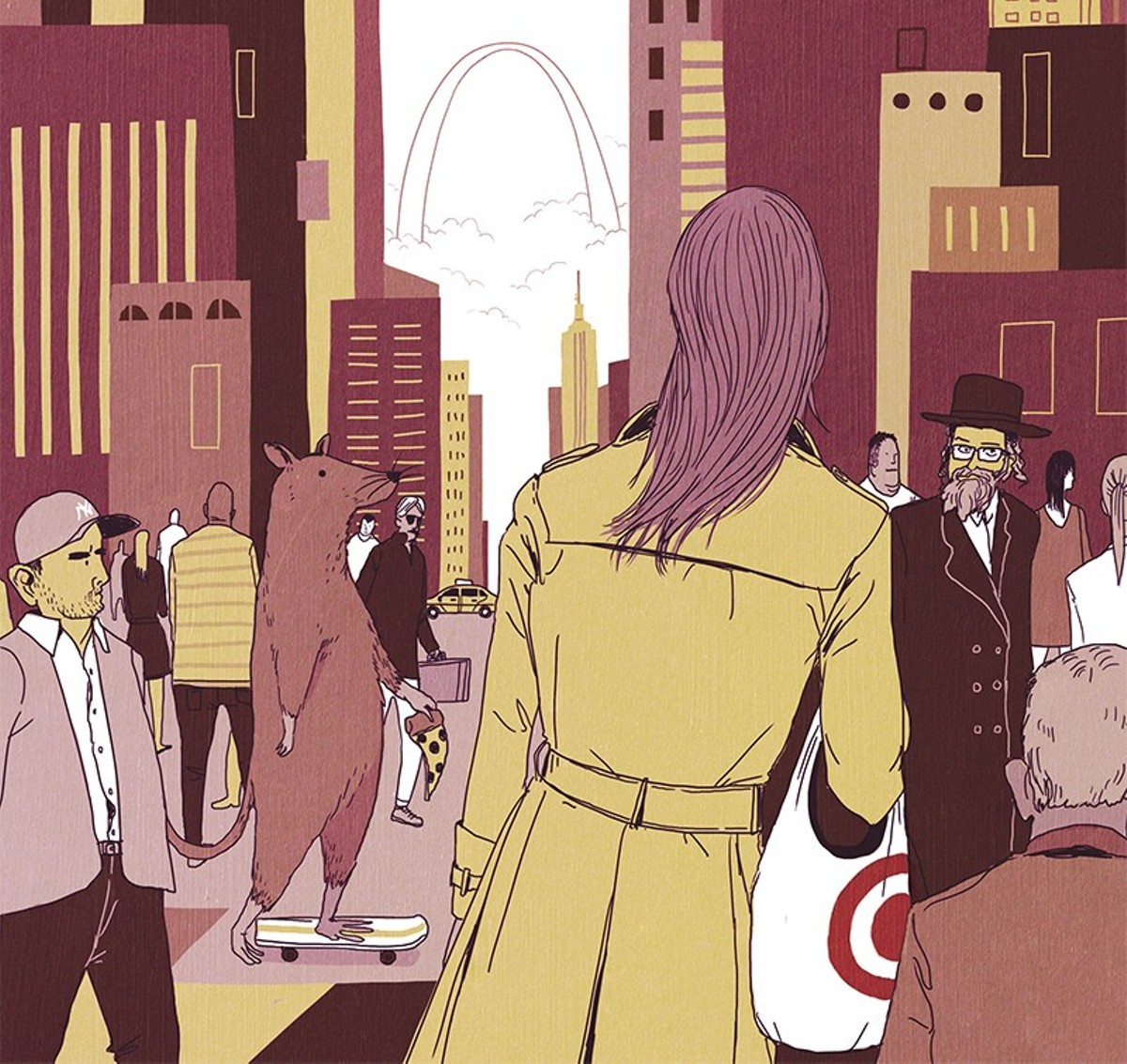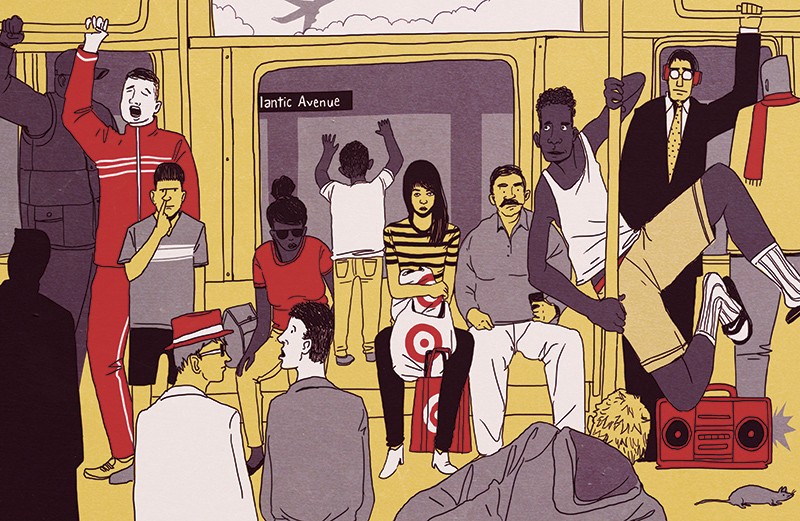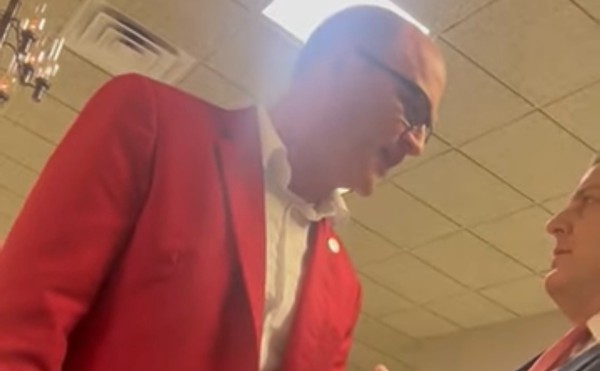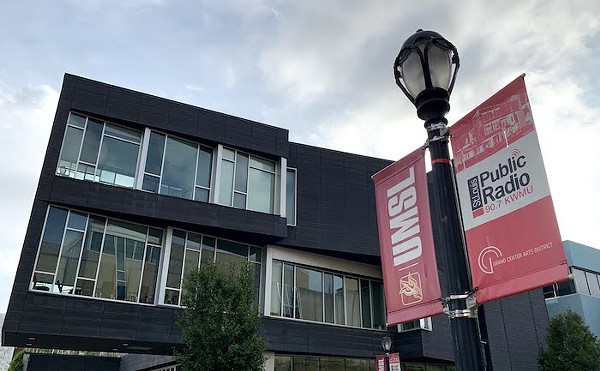One of my all-time-favorite Saturday Night Live skits is Kristen Wiig's Target Lady. I believe Target Lady had to be based on an employee in the Midwest because there is no way Wiig completed a character study for this bit at any of the New York City-area Targets.
She plays a kooky yet friendly cashier at the big-box retailer who celebrates when a credit card payment goes through, hates that she has to take a day off and becomes so excited about the merchandise she rings up that she leaves her post abruptly to hunt down the finds in the aisles. "Where am I?" she asks a shopper in one skit while experiencing a short-lived loss of memory. "You're at Target," he tells her. Target Lady's response: "Yay!"
SNL Target and the Target of my youth — the one at the intersection of 364 and Mid Rivers Mall Drive — have a lot in common: chummy cashiers, plenty of shopping baskets, no lines, general cleanliness. The best part about Mid Rivers Target is that on any given day, it will only take you 30 minutes to shop, you will find everything you need and no one will hit you with a cart because there are simply not enough people around. You could perform somersaults down the aisles if you wanted. If you can't find something, an employee is never far off. He or she will know where anything you could possibly be looking for is located and will not give you attitude when asked. When you're finished, you can wheel everything out to your car and drive it home — no schlepping stuff in canvas bags to the train and then to your tiny apartment.
I always end up at a Target when I visit my parents, and it is bliss. The last time I was there, I ran into one of my cousins. "The kids are with my husband," she said contentedly. This was her "me" time. People in the Midwest go to Target to relax. Hell if I know where people in Brooklyn go, but it's definitely not to a big-box store.
To get to the Brooklyn Target, I first saddle myself with empty canvas bags like a pack mule at the end of a long journey. But this is just the beginning. I take the local R train 25 minutes north and then frogger across one of the busiest intersections in the borough, smack dab in the middle of a major transit hub and in the shadow of the Nets arena, avoiding gypsy cabs making illegal turns and the unwieldy mammoth B63 bus. I have to get up a packed escalator, making a wide right turn to avoid the crowds coming out of Applebee's, before finally reaching the front of the store, where I try to track down a cart.
Inevitably there are no carts, so I start shopping and hope I'll find an abandoned one somewhere. (Eventually I will, but only because it's blocking a busy aisle.) The Target has two levels, which means I'll have to use the cart escalator. It will probably break at some point during the trip, so I'll either forgo anything I wanted to purchase on the top floor or my cart. Once I see that the lines are wrapped around the store, I'll leave behind on average three items and jump into the express lane, which still takes forever. The cashier will not acknowledge me when I say hi. I'll shove whatever I've just purchased into the totes I brought and then fight my way back down the escalator, across the busy intersection, and complete the rest of the journey home.
The cart crash with the little boy from my first Target trip was just the beginning of many indignities I have witnessed at the store. There was the time during the middle of a particularly sticky summer when I went in search of a box fan and saw a child puke in the middle of an aisle and then watched her mother promptly collect her and walk away, making no effort to flag down an employee or help clean up the mess. And there was the time around the holidays when I went shopping for Christmas lights, and a homeless man leaving the store spit at me. The security guard, who saw it, shrugged. This is the Brooklyn Target, his look said. There are no rules.
Eighty-seven years ago, Virginia Woolf decided that a woman must have a room of her own to be successful. I'd be content with a humble twelve-inch bubble of personal space to prevent the people walking behind me up the subway steps from hitting my heels with shopping bags and tripping me. But with the average price of a single square foot of Brooklyn real estate being $697, that too feels out of reach.
Since Woolf's declaration, scholars have been studying the link between life satisfaction and environment, and with varying conclusions. For every study that says big-city features like noise and pollution contribute to unhappiness, another states that living in a sparsely populated area with little social interaction is worse.
Maybe the answer is somewhere in between — somewhere like the St. Louis suburbs of my youth. In a study published earlier this year, two Rutgers professors used data from the U.S. Centers for Disease Control and Prevention Behavioral Risk Factor Surveillance System to look at happiness in 230 American counties. Even when controlling for factors like poverty and crime, they found that people living just outside of major cities report higher levels of satisfaction, concluding that size and density are the factors most often associated with unhappiness. In a second study, one of those professors took a closer look at what size population made for a grumpy populace. Happiness gradually increases as population decreases but sharply drops when a population decreases to 5,000 to 8,000 people.
Some days, 5,000 people sounds just fine. For an introvert like me, anyway, who needs alone time and personal space, bumping against all of these other humans in the germy petri dish that is New York City has caused me to develop something of a short fuse. The anger builds with each social faux pas and manifests itself in surprising ways. When a stranger accidentally steps on my foot, or suddenly stops short while walking in front of me, or doesn't hold the elevator for someone, I feel like elbowing him sharply in the rib cage. If I'm waiting longer than 15 minutes on a crowded subway platform while a busker plays a screeching fiddle, my left eye twitches. It gets worse. When a kid accidentally kicks me on the train, I question whether I'm the type of person who should have a child because I feel like I could go off at any moment.
One night, I was walking home from work and an SUV ran a red light and almost hit me in the middle of an intersection — the driver braked hard and stopped inches from me. I exploded, pounding my fists on the hood of his car and screaming, "Fuck you!" I flipped off the driver with both hands and then realized he had two long curly locks of hair and a sable hat — he was a Hasidic Jewish man. For a second, I felt ashamed for acting like that in front of a conservative religious person. But then he yelled, "No, fuck you!" right back at me and sped off.
Safety aside, there are other factors associated with large populations that contribute to dissatisfaction. The bigger your city, the longer your commute time and smaller your home size, both negatively associated with separation or divorce in couples. New Yorkers clock the longest commute times nationwide, on average 33 minutes one way. New York City is also the most expensive place to live in the country and the seventh most expensive place to live in the world. This would all be fine — just move to any of the other 49 states — except that the number of people who are choosing to live in urban environs is growing. By 2050, 66 percent of the world's population will live in big cities.
Scientists, always telling us what we already know, have a solution to unhappiness: Lower your expectations, and you'll feel less disappointed. Another suggestion, which everyone reading this but me has already figured out: Live in the Midwest, where you'll have room to breathe.








